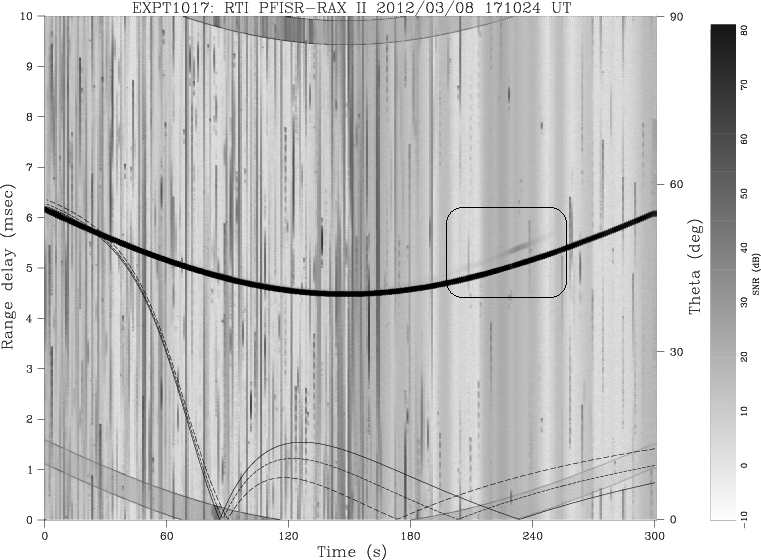On Thursday, March 8, RAX-2 measured radar scatter from irregularities in Earth’s ionosphere! The measurements, shown in the plot below, demonstrate the unique scientific capability of the RAX CubeSat. The RAX measurements will help scientists improve the understanding of and develop forecast models for electron density irregularities in the ionosphere, which are known to disrupt GPS and communication signals.
In the RAX data shown below, the horizontal axis is time into the experiment (5 minutes total as RAX passes over the ground-based radar station), and the vertical axis is the time delay between when radar signals were transmitted from the ground and received by the spacecraft. The shading indicates intensity of the measured signals. The black strip is the direct beam of the radar from the ground. The feature in the box above the strip is radar signals that have scattered from irregularities in the ionosphere. The primary RAX measurement is the intensity of the scattered signals. This, along with measurements from the ground-based radar (electric field, electron density, and plasma temperatures), will allow scientists to characterize the irregularities.

The features that RAX is characterizing have been caused by this week’s solar storm. The storm is still very active, but we have paused the RAX experiments so that we can download higher fidelity data from the experiments already performed. When this is complete, we will resume the experiments to obtain measurements of radar scatter in a variety of conditions.
